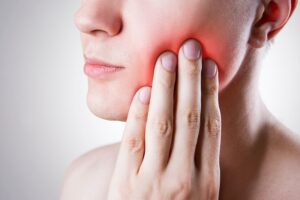A dentist might need to extract a tooth if it suffers from infection or severe decay that does not respond to other dental treatments. After this procedure, you will have a surgical site in the socket that requires time to heal.
It forms a blood clot naturally during this recovery. You will need to be careful around this area. If you disturb or dislodge the clot, you expose nerves and bone to the elements, resulting in a painful condition called dry socket. You will require intervention from your dentist to resolve this problem with your oral health.

How to Prevent Dry Socket
To avoid this discomfort and extra dental work, follow your dentist’s aftercare guidelines to prevent dry socket from forming after this treatment. Read on to find tips for avoiding dry socket as you heal from a tooth extraction procedure.
Practice Careful Oral Care
You can anticipate some downtime as you recover from tooth extraction oral surgery. You will have sites at the tooth socket that will need time to heal properly. But during this period, you still need to take care of both those surgical sites and the rest of your smile.
Do not stop practicing oral hygiene. Your dentist will provide guidelines to ensure you can thoroughly clean your smile without disrupting the healing process of the extraction sites. Otherwise, you could risk tooth decay in your smile or infection at the surgical sites.
Make sure you use careful, gentle movements near these sites or you could hurt the healing blood clots there. Then you could form dry socket and face oral health complications. Adhere to your dentist’s aftercare guidelines for optimal results.
Avoid Sucking Motions in the Mouth
When you perform a sucking motion in your mouth, the combination of airflow and muscle movement will have a high likelihood of disturbing a healing blood clot at a tooth extraction site. For this reason, a dentist will ask you to avoid this action, which includes sipping through a straw, for at least a week after this procedure.
Smoking will create a similar risk to your surgical sites. So you should steer clear of this habit as well during your recovery. To better resist the temptation to smoke, you might want to cut back or abstain from this behavior prior to your dental work to prepare yourself. If you do notice symptoms of dry socket, do not hesitate to let your dentist know about this dental emergency.
Select Soft Foods
Your mouth might feel sore when the anesthetics wear off after returning home from a tooth extraction. So you can feel more comfortable when you choose soft-textured foods to eat as you recover. Good examples of a soft diet include oatmeal, mashed potatoes, and yogurt.
Hard, sticky, or chewy foods might also pose a risk of giving you dry socket. So try to avoid these types of foods. You can start to introduce more solid foods after 24 to 48 hours. But go back to soft foods if you feel pain. Call your dentist for advice on healing, pain management, and oral health.
